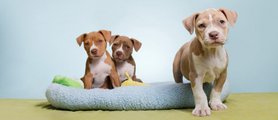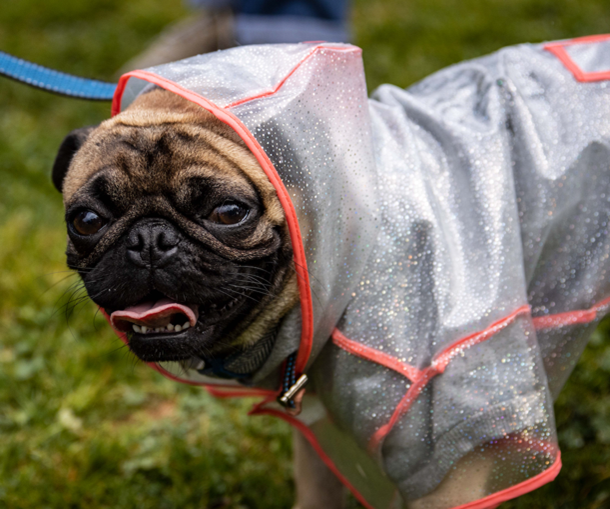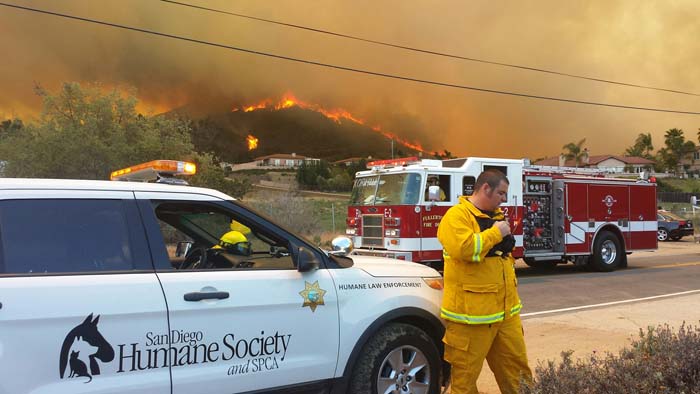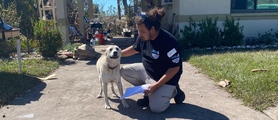Animal People:
Geraldine D’Silva
San Diego Humane Society’s Director of Community Veterinary Services
Growing up in India, Geraldine D’Silva learned compassion and a fierce sense of equality for all living beings. From caring for packs of street dogs in her youth to volunteering with those experiencing homelessness across the globe, her journey has led to her current impactful role as director of Community Veterinary Services at San Diego Humane Society. In our Animal People interview, Geraldine tells us about the animals who’ve inspired her and the moments that taught her to be courageous in the face of adversity.
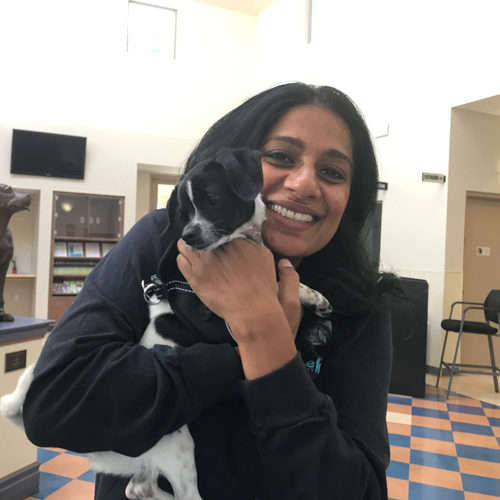
Were animals a big part of your childhood?
Growing up in India, I actually didn't have any pets for the first part of my childhood. I just played with everybody else’s animals and took my neighbor’s dogs for walks. All of the animals I loved were on the street. There was a stray horse who would walk by my house at the same time every day, and I called him Scruffy Mike. He’d stop by my house when I came home from school and I would run inside and get him a carrot, and my mom would let me give him sugar lumps. Then he would go on his way.
There were all these dogs who lived on the street and dog catchers would come and try to catch them with lassos. These stray dogs were scared of everyone, but I would feed them and they would come to me. I had a certain way of calling the dogs, and I would run and call the dogs whenever I heard the dog catchers’ trucks. The dogs would come running to me with their puppies, and I told the dog catchers that they were all my dogs. They’d say, “No, they’re not.” I was only 8 years old, but I wouldn’t let them take the dogs. I felt like that was all I could do for the dogs at that time.
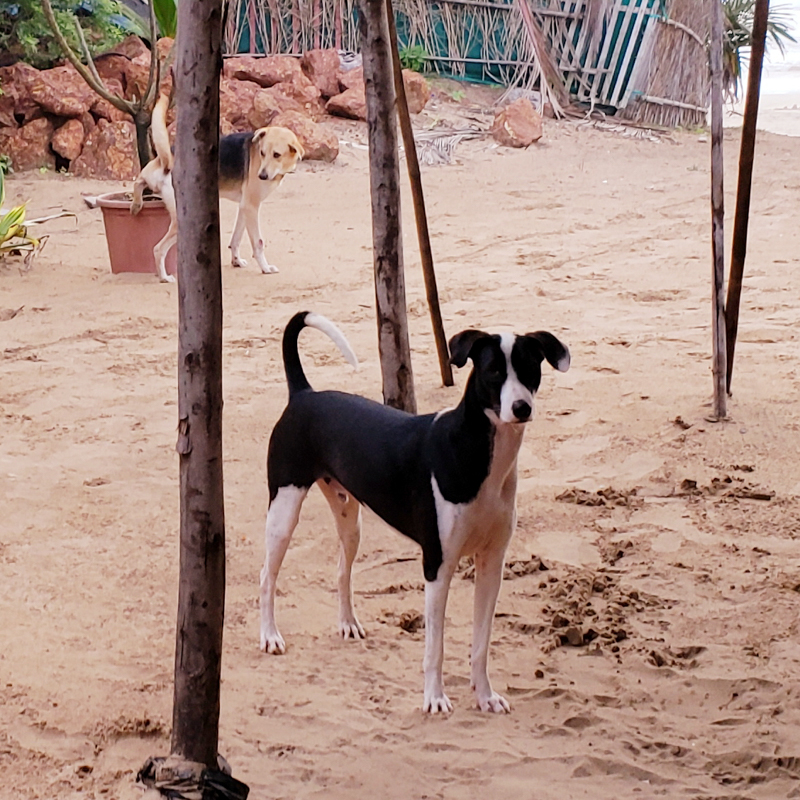
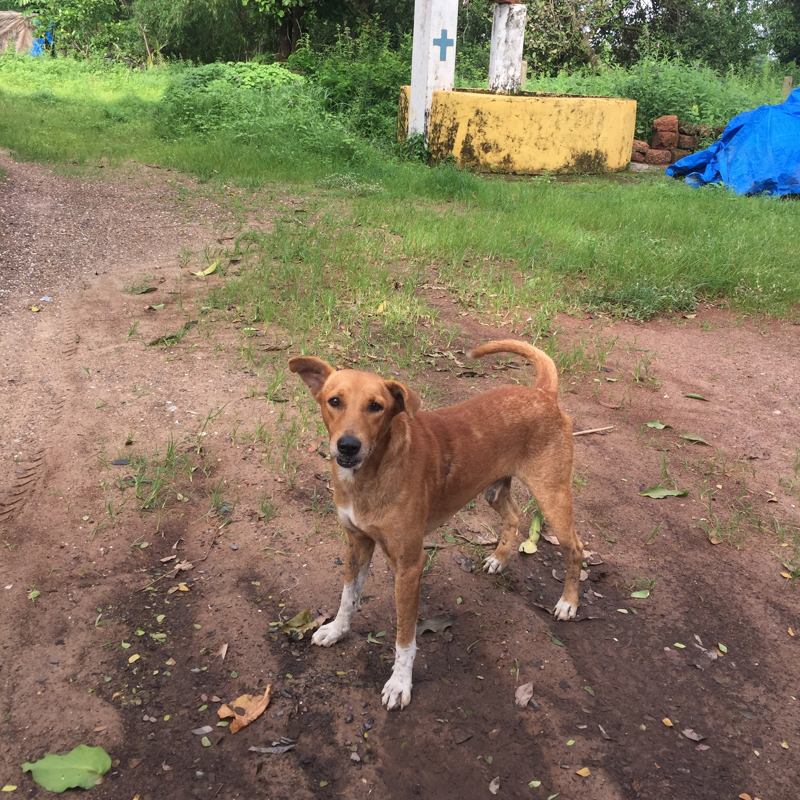
What inspired this strong compassion for animals at such a young age?
I think everyone has it, and for me, it was just there. My father and mother grew up very differently. My father grew up in a fairly privileged family in a hotel. He has four brothers and they each had nannies and were always served by waiters. It was an unusual upbringing. He and his brothers would rescue animals from the street — they had dogs, songbirds (bulbuls) and pigeons, a duck and geese. My father and his brothers would bring these animals home to the hotel and look after them. My mother, on the other hand, grew up very poor. There were 14 people who grew up in a one-room flat. Food was very precious for them, so animals were never even a consideration because they needed food for themselves. My mother has always had a big heart and compassion for people, and my father is a huge animal person, so I learned from them both in some ways.
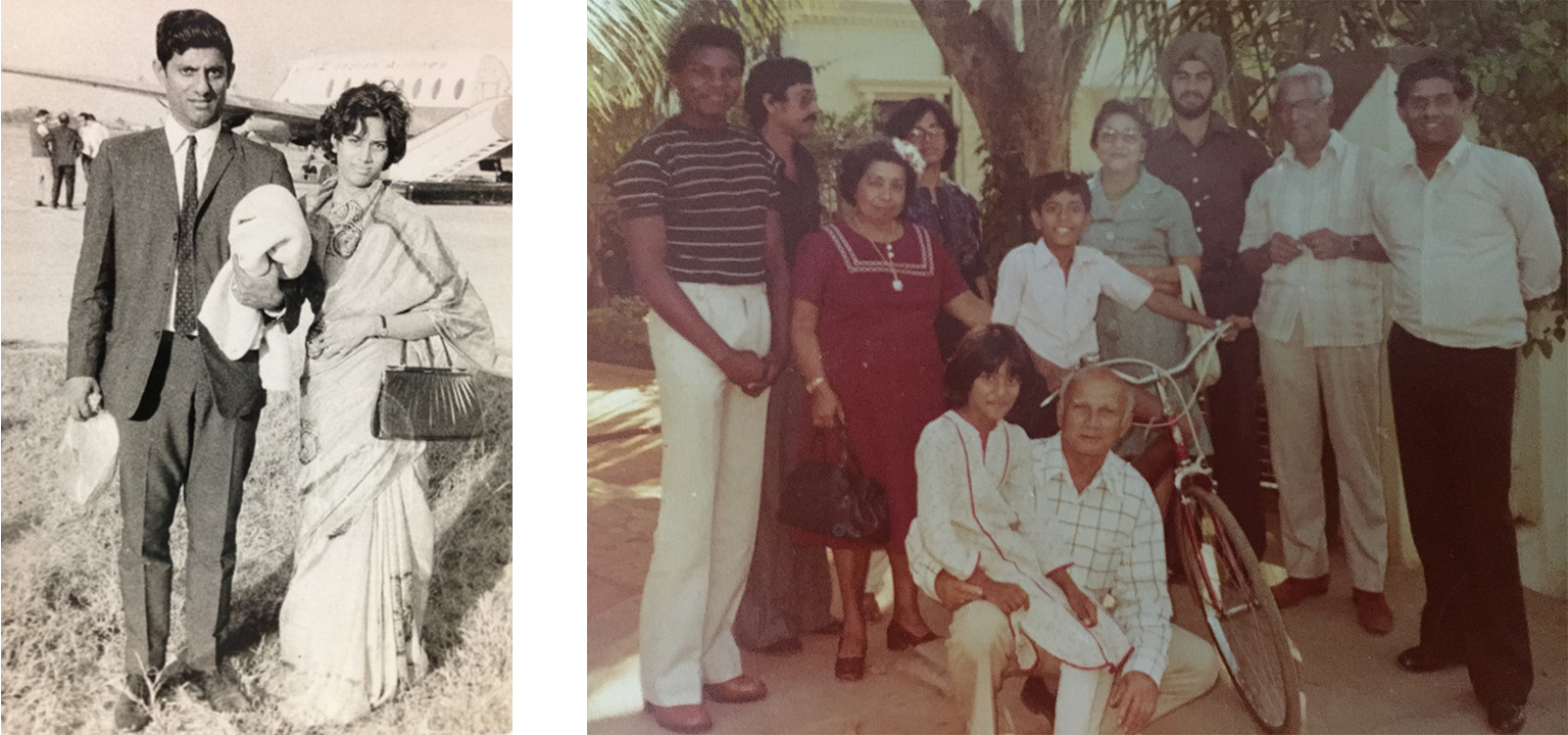
I think back to when I was a little girl, and I was brought up equal in my family, in a country where girls were not treated equal to boys. I was brought up as a strong woman. I would tell our driver to stop in the middle of the road if I saw a horse being treated poorly. I remember once that people were whipping a horse who was carrying a cart with a very heavy load. I stopped to shout at these people and told them to get down and pull the cart themselves instead of whipping this poor animal. These people used to laugh at me and ridicule me, but I was livid because I just felt like no one was helping these animals. I felt helpless, but if I didn’t say something, who else was going to say anything?
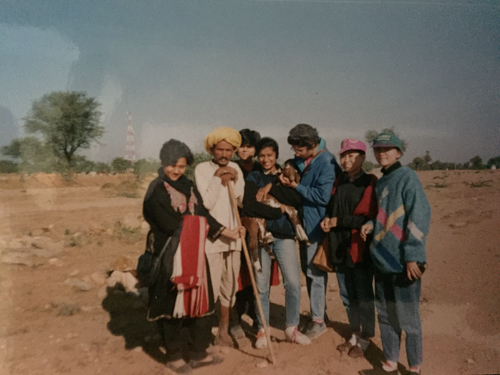
What were your early experiences in animal rescue like?
As a teenager in New Delhi, I used to find dogs on the street. I’d hear screeching cars in traffic and just know it was another dog or puppy, and I’d run onto the street and retrieve these injured dogs and hold them until they died. That was my life, because there was no animal shelter and I didn’t know what to do. When I opened the door in the morning, there would be all these dogs outside my house because I used to feed them. I’d steal food from the house and put out milk and bread for all the pups. It was just such a beautiful feeling, knowing that these dogs recognized the safety I could provide for them, just because I gave them bread and milk. I felt like I was saving these dogs, but it was also very hard because they might still die.
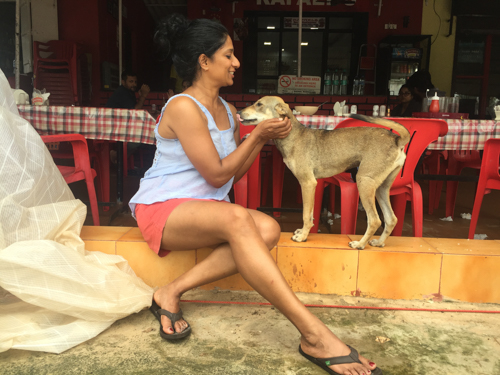
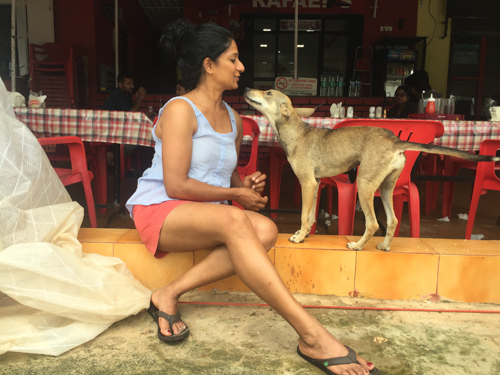
I later found out there was a shelter being run by a woman named Geeta Seshamani, who had a bunch of cages and newspapers (under a freeway at that time) and cared for dogs. We had a driver who would take us to school, and I’d ask my driver to help me take the dogs I found to her shelter. Our driver would be really irritated with me, because there were all these stinky, dirty dogs that I’d pick up from the gutter and pile in the car. I’d take the dogs and all the newspapers from our house to the rescue. Geeta’s rescue, Friendicoes, is still active today.
Were there certain dogs who made a lasting impact on your life?
I went off to boarding school and didn’t have animals for the longest time. When I was studying for my finals and getting ready to move home, I found out that someone’s dog had puppies that were mixed with a street dog and they were going to be left on the street. Every day, I would buy milk from the store to help feed the puppies and then return them to their mother — there were so many puppies. When it was time for me to come back home, I decided to bring the skinniest puppy with me. My mother did not object, though she wasn’t much of an animal person at the time, but warned that my father wasn’t going to accept this new family member because he wasn’t a purebred dog. My dad said he wanted the puppy out of the house by the next day, and I cried and cried. The next day, he came home from work and again said he wanted him out of the house. The third day, my dad had named the dog Pip; and the puppy was so excited to see my dad when he got back from work. And that was it. Pip was so spoiled and he stayed with us for 14 1/2 years. He turned out to be a huge, handsome dog. He was really intelligent and sweet, and untrained. We walked him on leash sometimes, but Pip would mostly walk himself to the park, chase some dogs, and come back when he was done. We’d just watch him the whole time. He was the love of our lives.
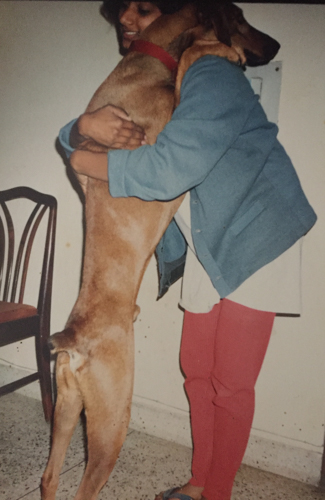
I adopted another dog, Poppins, who lived his whole life on the street because my parents wouldn’t let me get a second dog. I was coming back from work one day when I followed some bloody paw prints to a bush where he was hiding. That was the start of Poppins popping in and out on the road outside my gate every day, waiting for me from the time I woke up to when I got home from work. He would tug at my clothes when I tried to get on public transportation, because he didn’t want me to leave, and chased the rickshaw until we were out of sight. He would clear a path for Pip and I when we went on a walk, and barked at the other street dogs if they got too close. He created that job for himself! I felt he was my soulmate, and my story would not be complete without him. Sadly, when I returned to India, a rickshaw driver who had known the bond we shared told me that Poppins was hit by a car and died. I still live with that heartache — he was a beautiful dog.
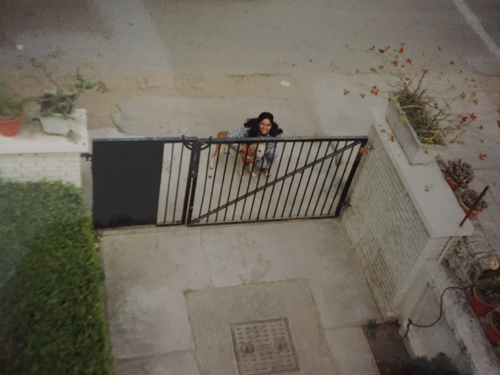
What pets are in your life today?
I adopted my first dog here and called her BrandiWine. She was a really, really, really fantastic dog. It was so different from being in India. I got her when she was already an adult dog, about to be euthanized, and I had her for 13 years. She was my heart dog. After I adopted BrandiWine, I adopted my beloved daughter Kiana.
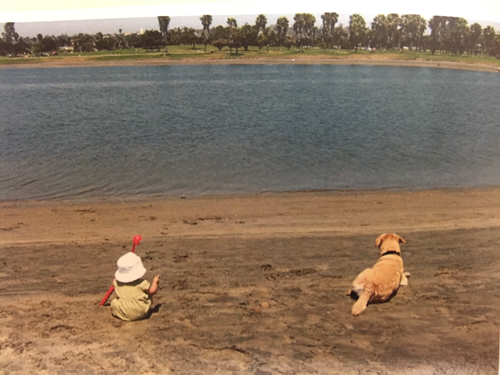
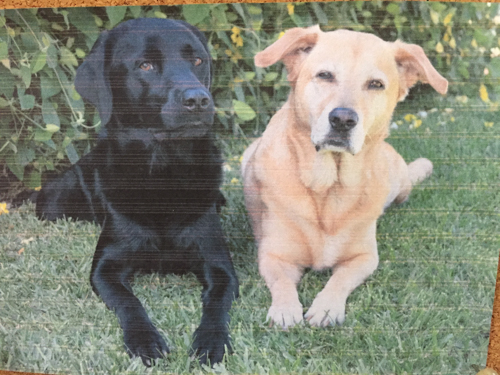
I have two dogs now. Ziggy Stardust (I call him Stardoo) is very naughty, but in a cute way. I wanted to have a naughty dog because BrandiWine was so good, and I decided I didn’t want to train a dog to be that good. He’s a rescued Lab mix, and he’s lived up to be everything I wished him to be. Then I have a little dog, who is my first little dog, named Stanley. He was one of my fosters from the SDHS Escondido Campus, and he’s a tiny Chihuahua, or a spaniel, or a dachshund something mix, and irresistible! They’re family. I never thought I could ever have two dogs because my parents always said no dogs, but one day I just realized I could have more dogs and I love it.
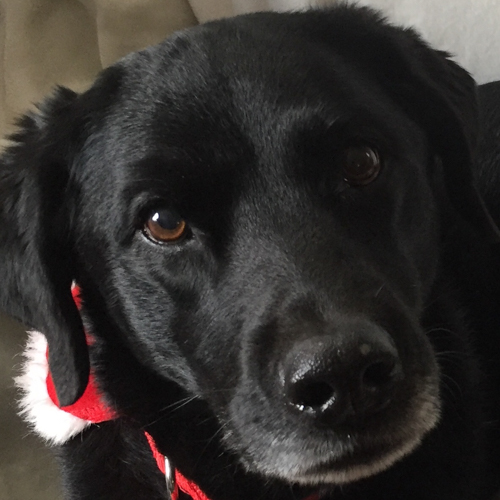
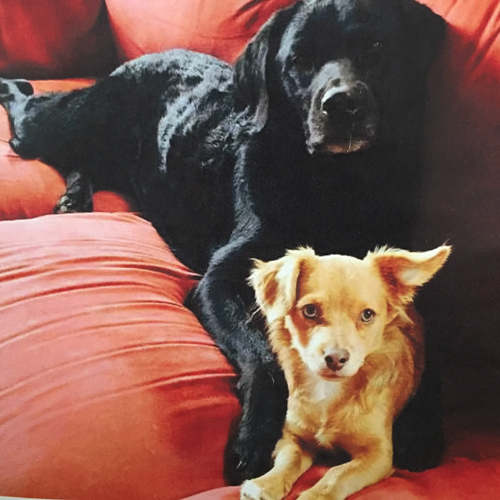
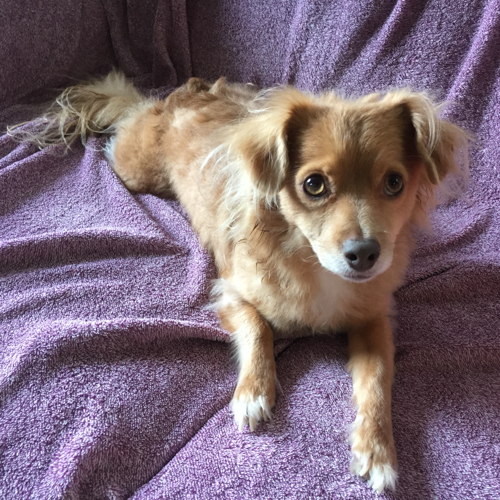
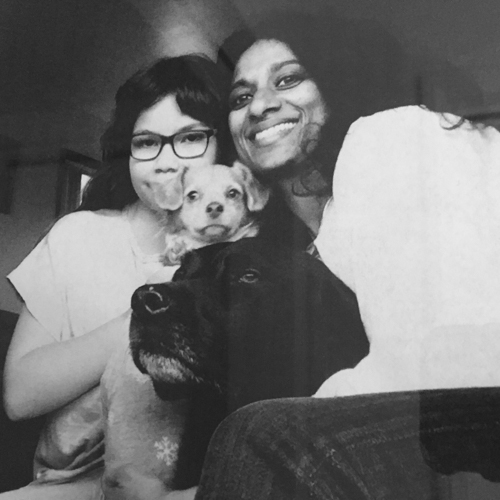
Did you know early on that you wanted to work in animal welfare?
I never really looked for a job in animal welfare because I never thought there was a job for me in that space. I thought I would not have the courage to look into the eyes of all the animals waiting to be chosen. I really didn’t know what I was going to do for a living, and since I have always loved people and animals, I figured I would study sociology. When I studied sociology, I travelled and lived in the really remote villages in India, and that was a real eye-opening experience for me. It was so remote that you had to rise with the sun and go to sleep when the sun set because they didn’t have electricity or running water. We slept in huts made of dried cow dung. As poor as people were, they were so hospitable and generous. Wherever you’d go, they’d welcome you with a cup of tea. Their simple life really left an impression on me.
I then moved to Scotland to get my MBA, and that was the first time I left India. At first, it was just like what you see in the movies. Everything was clean and sparkly on the streets and there was no poverty. After my MBA, I could not get a job there because I faced discrimination, so I started volunteering at a homeless shelter. I couldn’t believe there were homeless people and their dogs out there in the cold; I was shocked. In India, everyone was struggling, but in Scotland you could volunteer and find joy in it. I loved spending my time this way and started looking for other volunteer opportunities.
All of this led me to Santa Cruz, California. I couldn’t get a job at first because I didn’t have the visa status, so I started volunteering with the Santa Cruz SPCA. I worked in humane education and would take shelter dogs to schools to show kids how to train dogs and how to be safe around them. I was just loving this life and was doing things I had never even dreamed of. One summer, I lived on a farm in Orland and took care of rescued factory farmed animals, and I knew all of their names.
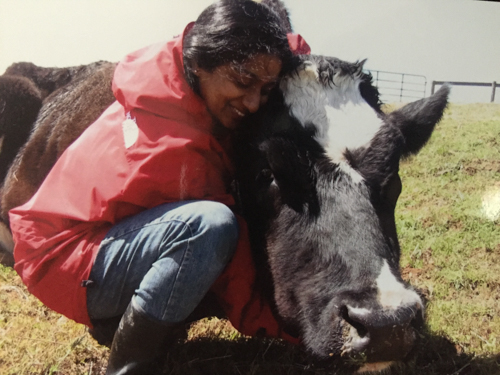
What was your first official job in the animal welfare field?
I started volunteering at PAWS San Diego (Pets Are Wonderful Support), an independent nonprofit, when a close friend of mine introduced me to this really fantastic, volunteer-run organization that was founded to help the HIV and AIDs community who were isolated with only their pets for companionship. At this time, PAWS was just a packed little trailer, and I was a volunteer in charge of cleaning the room that had all the dog food in it. I found out that they were pivoting from being volunteer-run to becoming a staff-driven organization. By this time, I had years of experience in advertising, my MBA and degree in sociology, as well as research consultancy and graphic design, but the only opportunity was to start at the bottom as an operations assistant. I went in for an interview and told them I thought they needed to change the logo, the tag line and the mission statement, and that some things weren’t making sense the way they were going. I didn’t think they would hire me, but I got the job.
I couldn’t believe how I lucked out, because I love animals and people, and this perfect job fell in my lap. Six months later, I became the operations manager, then operations director another nine months later and executive director one year after that. As executive director, I felt like I could make bigger changes. I had an incredible two-person team, Lauren and Quinn, who have grown with me and still work with me at SDHS, and our work was supported by a large network of volunteers. I built a strong board and we changed the logo and the tag line, and clarified the mission statement and the strategic plan. Shortly after that, PAWS merged with San Diego Humane Society.
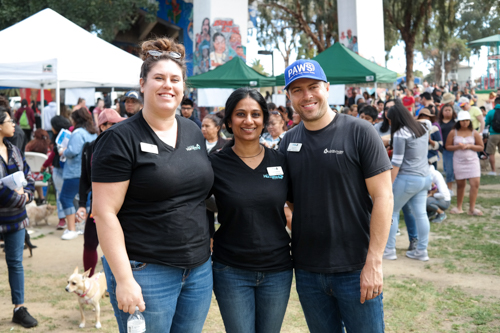
How has your work developed at San Diego Humane Society?
The HIV/AIDs epidemic was the reason why PAWS was founded, and during COVID-19, the PAWS name was retired, and the mission was fully integrated into San Diego Humane Society with the same mission of providing a safety net to keep families together. Now, the organization as a whole provides proactive services and interventions. When the COVID-19 pandemic surged, we were able to immediately increase our pet food distribution county-wide, making our organization a true collaborative safety net when our community needed us most.
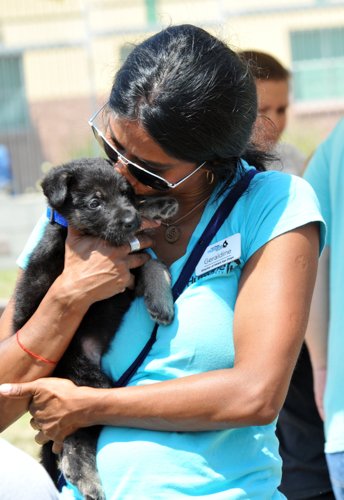
Now I’m growing the Community Veterinary Services department, which is part of the Community Support Services we offer to pet families. Across the country, animal welfare organizations are evolving to provide more community-based services. Animals are fortunately getting recognized as an important part of the family unit, so organizations are providing more comprehensive services and support to help people keep the pets they love. This Thursday at Community Pet Conversations: Community Veterinary Services and One Health, I’ll be discussing how we’re bringing services directly into underserved communities that need them most, so both humans and their companion animals can get the care and resources they need. We’re also doing more to support pet owners experiencing homelessness, so that they can keep their pets healthy and by their side.
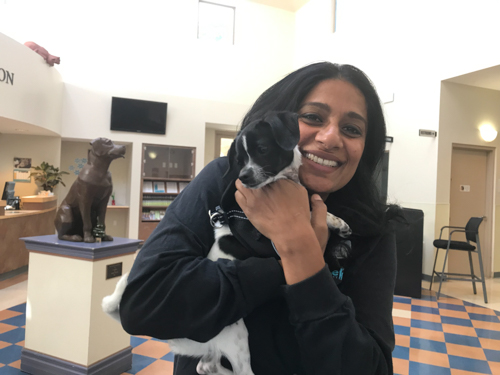
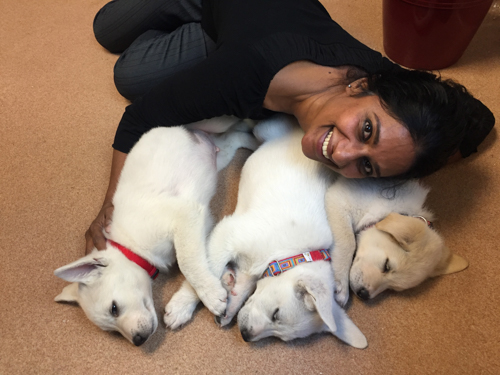
Is there a standout moment with animals that shaped who you are today?
I was working in an ad agency in India, where people had drivers who would take you to work and wait there until you finished. There were stray dogs all over the place and they would hang out near where the drivers and food carts were during the day. One day, a dog bit one of the drivers. I was in my first ever meeting in a conference room when I heard this dog screaming and crying. It was a sound that pierced me in a way that is hard to describe. I could not just ignore it, yet everyone was still just chatting at this meeting. My brain went straight to knowing this dog was being beaten to death, and I covered my ears and ran straight out of the meeting to hide under a table at the other end of the office. I couldn’t bear to hear that sound. Meanwhile, everyone was running after me because no one knew what was going on.
Finally, I emerged from under the table, and I couldn’t believe that no one else had heard that dog. My boss at the time, who is now one of my best friends, asked me what happened. I told him about the dog and was sure that I was going to lose my job because I ran from a meeting. He said, “No. Actually, you shouldn’t be embarrassed and this isn’t grounds to lose your job. I wish that other people had also heard that. Do not lose that compassion, but try to be a little stronger because other people will see you as being weak.” I feel like, even still today, I’ve not been able to be strong like that. I remember these moments and sounds so clearly and the emotions still feel so fresh. I hope, maybe one day, I can get there.
How can the animal welfare community support pet owners who are experiencing homelessness and other hardships?
Long-term, the only solution is actually changing the mindset and culture of all of the agencies involved, the policies and laws. For example, people experiencing homelessness who have animals don’t know where to begin to ask for help. We have to keep this in consideration. We have to first accept that it’s not just about animal welfare anymore, but about human and animal welfare. We’re making progress at domestic violence shelters, homeless shelters and food banks and there is change, but we need to look at all of the solutions and preventative support we can provide. From a sociological perspective, it’s a cultural change and it’s going to take a long time to happen. We have to keep the momentum going.
…
Learn more about San Diego Humane Society's community support services and resources at sdhumane.org/supportservices.
Join Geraldine on Thursday, Dec. 6, 6-7:30 p.m. for Community Pet Conversations: Community Veterinary Services and One Health on Zoom. Register now!
Published: December 6, 2021


